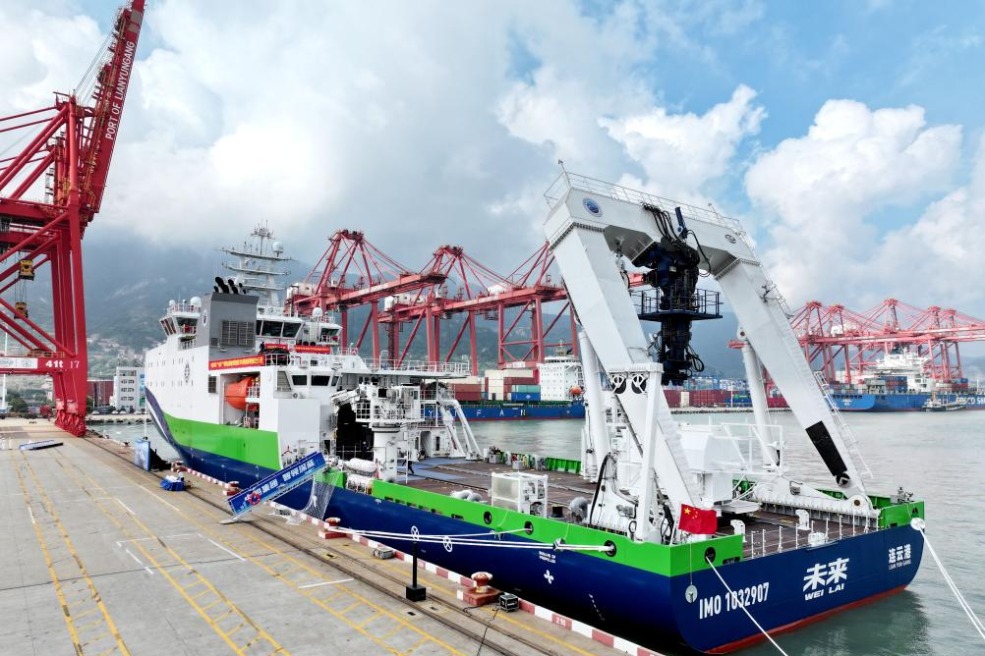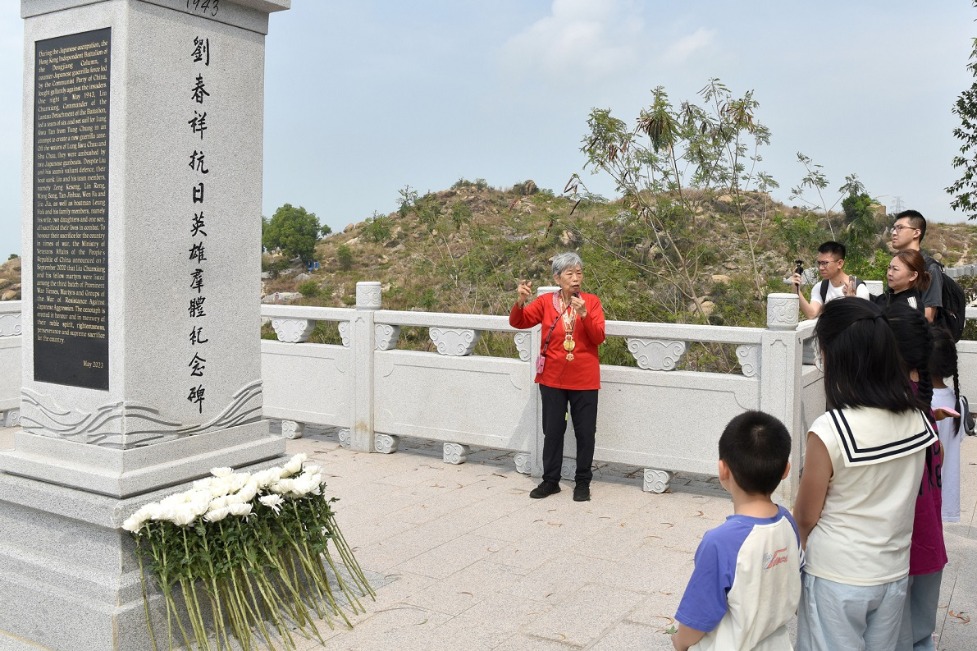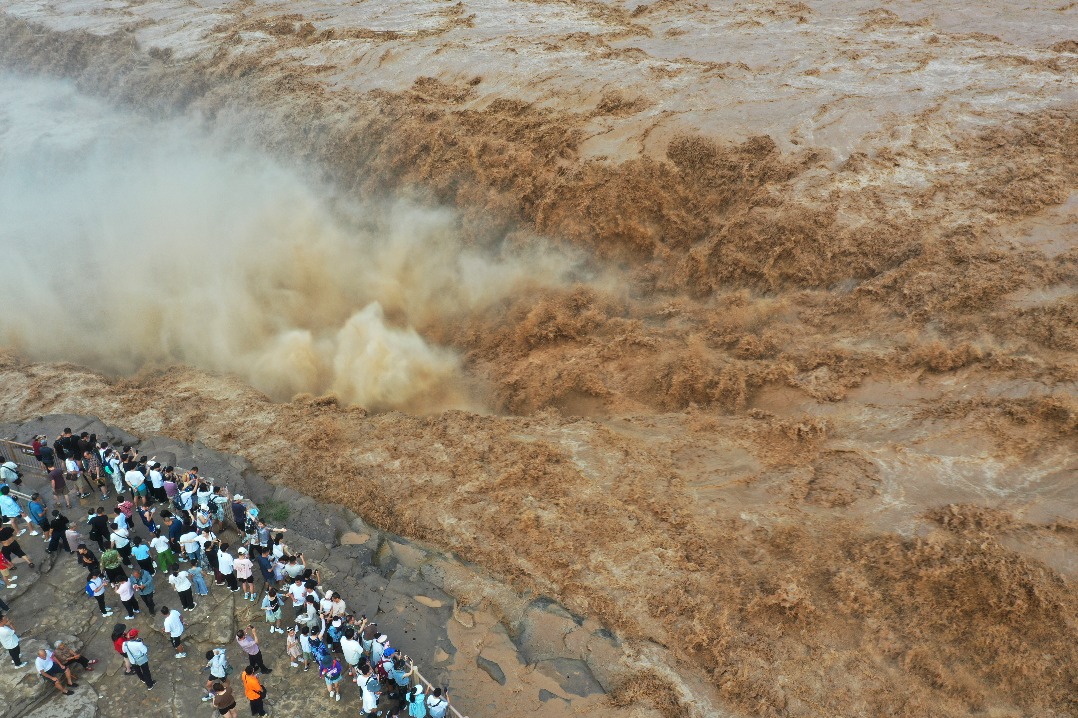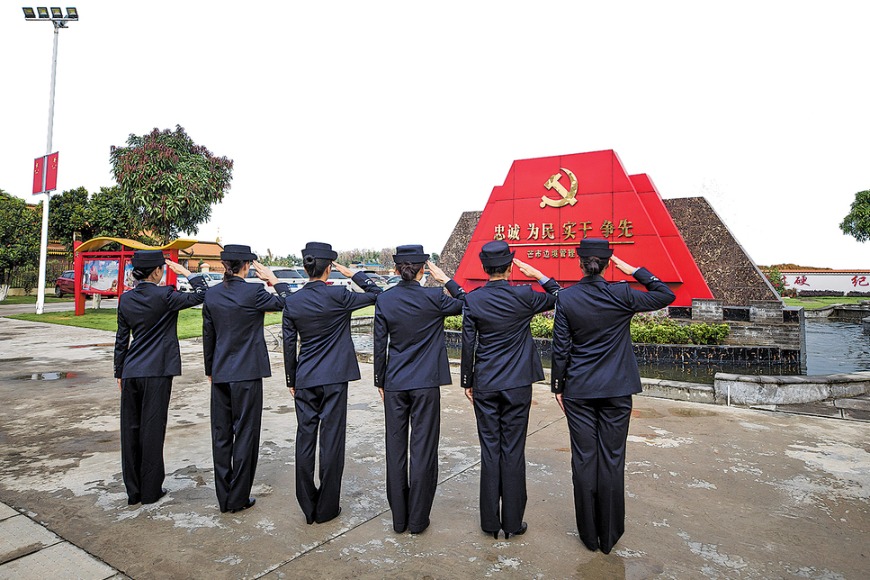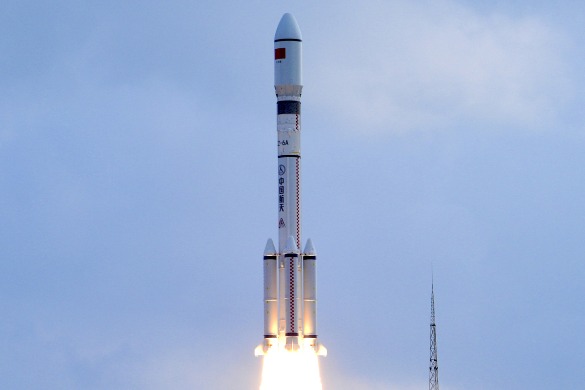After 75 years, PLA's 'miraculous' liberation of Shanghai remembered
Commanders strictly stuck to tactic of minimizing impact of fighting on infrastructure, residents


The Shanghai General Post Office Building has been standing on the northern bank of Suzhou Creek in the heart of Shanghai for a century.
In a glass window on the third floor, there is a 1-centimeter bullet hole, the only remaining trace of the 1949 battle to liberate Shanghai on the entire building, which stands 51 meters high.
With its magnificent business hall dubbed the "First Hall in the Far East", the building was witness to a battle won without using heavy weaponry, and conducted like "catching mice in a porcelain shop".
The People's Liberation Army launched an attack on the Kuomintang forces to take over Shanghai with the least possible damage on May 12 of that year. The 16-day battle, which was among the key events that paved the way for the founding of the People's Republic of China on Oct 1 the same year, is widely acknowledged by military historians around the world as a miraculous feat of warfare.
"Home to over 5 million residents, including thousands of expats, Shanghai didn't suspend supplies of water, electricity and gas for a single day during the battle," said Zhang Yaojun, a senior researcher from the Shanghai Archives Bureau, during a media interview ahead of the 75th anniversary of the liberation of Shanghai, which falls on Monday.
"A city of glory, openness and inclusiveness, Shanghai is also where President Xi Jinping put forward the concept that 'cities should be built by the people and for the people' in 2019. Even from the battle 75 years ago, we can clearly see that the people were prioritized in the city," Zhang said.
History reminds us that when enjoying life today and looking to the future, the public should acknowledge the sacrifices made by those who came before them, Zhang said.
"Only in this way, can we appreciate how this thriving city actually comes from the sacrifices of more than 7,600 People's Liberation Army soldiers who had the full support of the people back then," he said.
"If the city had been ravaged by artillery fire, the foundation for its development would have been fairly poor."
One bullet hole
On May 12, 1949, a series of battles took place, mainly on Shanghai's outskirts, with the fighting coming to a head on May 25 when the PLA launched a final push to oust the Kuomintang from the banks of the Suzhou Creek.
Located on the northern side of the Sichuan Road Bridge, the Shanghai General Post Office Building was a stronghold for the Kuomintang where many soldiers were holed up.
To try and minimize damage to Shanghai's infrastructure, the PLA had vowed not to use artillery in downtown areas. This resulted in many PLA soldiers being killed on the bridge while attempting to cross to the north.
Hundreds of postal workers under the guidance of Communist Party of China members were stationed in the building, and helped contribute to the surrender of the Kuomintang soldiers, historians said.
"Such a large-scale battle didn't leave extensive damage to the building. It showed the PLA's commitment to return the city intact to its people, which was also demanded by the CPC," said Wu Xiaohao, a guide with the Shanghai Postal Museum.
The PLA's tactics during the battle to liberate Shanghai followed the principle of minimizing any impact on the people, experts said. The PLA even avoided routes that would have resulted in fewer casualties for its soldiers, but placed residents at risk or cut off their supplies.
"For example, one route could have been taken to encircle the city," Zhang said. "But that would have resulted in the blockade of transportation supplies to support residents' daily lives as people were concentrated in the downtown districts in those days. So they abandoned the idea for the attack."
For the same reason, the PLA commanders refused to use tactics that could have destroyed the city's infrastructure, he said.
"What they chose for the combat plan was to force the enemy to fight a decisive battle on the city's outskirts and reduce the enemy's strength downtown. They were determined to protect the city and the people at the cost of more sacrifices of PLA soldiers," Zhang said.
Another example of the PLA's determination not to disturb the residents was the practice of officers and soldiers sleeping on the streets rather than staying in people's homes.
'Worldwide victory'
A Xinhua News Agency editorial, which was reviewed by Mao Zedong, was published in the People's Daily on May 30, 1949.
It said that Shanghai was China's largest economic center, and its liberation meant that the Chinese people had defeated their enemies militarily, politically and economically. Also, Shanghai was the main base of imperialist aggression against China, and the city's liberation showed the Chinese people had established the foundation of national independence.
"Moreover, the liberation of Shanghai was not only a victory for the Chinese people, but also a worldwide victory for the international peace and democracy camp," read the editorial.
Broadway Mansions was one of the tallest buildings on Shanghai's Bund until the 1960s. The 22-story building is located near where Huangpu River and Suzhou Creek meet.
During a recent media tour, experts from the Shanghai Archives Bureau showed reporters an old photo taken by foreign reporters while the liberation battle was underway. In the photo, Kuomintang troops can be seen on the 18th floor terrace of the mansion firing on PLA soldiers below.
"We can imagine how difficult it was for the PLA. They were under intense attack by firepower from above, and they couldn't use heavy weapons," Zhang said.
"The Kuomintang troops not only occupied the high floors of this building, but also some others on and near the Bund, including the Peace Hotel and the Park Hotel. The PLA fought bloody and extremely arduous battles," he said.
Today, that same terrace is an observation deck to enjoy breathtaking views on both sides of the Huangpu River. Visitors can also look at a golden plaque on the wall embossed with the names of leaders from around the world who have visited Broadway Mansions over the years.
"Since 1956, more than 120 delegations who represented the governments of their countries have been accompanied by leaders of China to the observation balcony to enjoy the views of the vibrant economic center," said Pan Su, a public relations manager of Broadway Mansions. "The mansion is now dwarfed by the surrounding skyscrapers."
Zhang noted that it is often said of Shanghai that it's a city where people can come and make their dreams come true.
"When we have a better understanding of those extraordinary days 75 years ago, we can better gather the energy from the people and jointly create a better future for this prosperous city," he added.
Foreign witnesses
At the time of Shanghai's liberation, the city was undoubtedly the most international metropolis on the Chinese mainland. Thousands of expats lived there, and out of 30 districts under Shanghai's administration, 27 were inhabited by foreigners. Some of the expats recorded this important chapter in Shanghai's history.
Documentary director Wang Xiangtao gathered the content for his book Shanghai Liberated published in 2020. The book tells the story of the city's liberation through the eyes of Westerners — mainly British and United States journalists, diplomats, doctors, and businesspeople — as well as other foreigners residing in the city at the time.
Mariano Ezpeleta was then consul general of the Philippines. He lived near the Bund and had a chance to closely observe the newly arrived PLA soldiers in late May of 1949.
He recorded that most of the PLA soldiers looked only 17 or 18 years old, were skinny and immature, and even the marching of the "big boys "seemed "in no way natural".
"They looked like children from the countryside without rich experience of cities. They stood at street crossings, cautiously holding their rifles pointing downward. They looked around with eyes wide open, apparently surprised by the buildings in the urban environment," he said.
Bill Powell, a journalist with The China Weekly Review witnessed the battle at Suzhou Creek. He lived in a building near the confluence of Huangpu River and Suzhou Creek.
His son Thomas Powell said in Wang's book that his father, in his twilight years, had repeatedly recounted what he saw.
"As the Kuomintang troops on the Suzhou Creek defense line resisted stubbornly, residents in the building where I lived were trembling, for fear that the enraged PLA would use artillery on the high-rise buildings on the other side of the creek," Thomas Powell said, recounting his father's recollection of events.
"But until white flags were hung up along the entire north bank of the creek, where the Kuomintang troops were located, what we feared didn't happen. The PLA soldiers didn't use heavy weapons from the beginning to the end. They used substantive patience and restraint instead," he said.
Historian Xiong Yuezhi, who is a researcher with the Shanghai Academy of Social Sciences, said that Westerners in China were an important community that witnessed the liberation of Shanghai.
"Shanghai is an international metropolis with a distinctive personality. The city's liberation is a symbol of national independence, and a historical transition from an outward-looking city to one with a greater focus on national needs. And this had unique significance in the entire liberation of China," he said.
- Beijing issues rainstorm, flood alerts amid heavy downpours
- China moves to revoke Buddhist ordinance certificate of Shaolin abbot
- 4 killed, 8 missing following landslide in North China
- Russian influencer celebrates Xinjiang's 'hundred-family banquet'
- Delivery driver earns praise for intervening to protect teenager
- China's first deep-sea green intelligent technology test ship arrives in Lianyungang
















